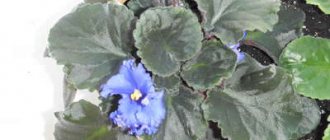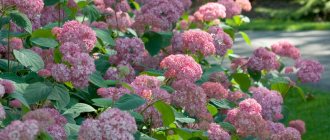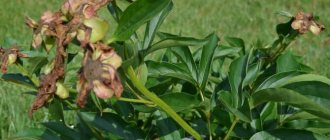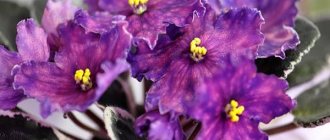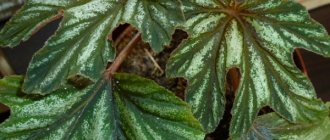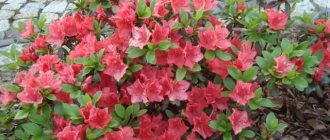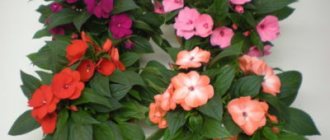Timing of autumn feeding
They begin to prepare hydrangea for wintering in late August or early September. By this time, the bush had already faded and stopped growing new shoots. The main task of the gardener is to replenish the balance of nutrients in the soil, depleted during the active growing season and flowering. Before the onset of frost, the hydrangea stems should be covered with a dense layer of bark. The root system must accumulate a supply of water and necessary elements.
The first autumn feeding is carried out in September, when the roots of the plant actively absorb nutrients from the soil. The next time you should feed the shrub is after formative and sanitary pruning of the shoots. The duration depends on climatic conditions. As a rule, it coincides with the beginning of leaf fall. The last time the hydrangea is fertilized with organic matter is at the same time as covering it for the winter.
Important! The timing of fertilizing depends on the variety. The earlier the bush blooms, the earlier it is fertilized.
Rules for applying fertilizers
Hydrangeas of the first and second years of life receive all the necessary nutrients from the soil. Before planting, the holes are filled with a mixture of soil and humus. They are mixed in equal proportions. This allows you to create a supply of nutrients that will last the plant for two years. In the third year, there will no longer be enough fertilizer; the plant requires additional feeding, which should be carried out throughout the entire growing season.
Terms of fertilizing
How to feed hydrangea in spring After hibernation, the plant needs nitrogen fertilizers. Nitrogen promotes the growth of green mass and stimulates shoot growth. Experienced gardeners recommend fertilizing with ammonium sulfate in the spring. It belongs to physiologically acidic fertilizers. Suitable for neutral and alkaline soil, for areas with heavy soil and slight slope. In such soil, the substance migrates slowly and is not washed away by rain.
Ammonium nitrate is recommended for use on podzolic soil. If you add nitrate in the spring, it will give nitrogen to the soil in nitrate and ammonia forms. Nitrate will actively acidify the soil. It is advisable to use urea in waterlogged areas. Use the fertilizer in dry form, scattering the granules around the bush and lightly incorporating it into the soil so that ammonium carbonate does not evaporate in the air.
The first feeding is carried out 14 days after the snow melts. You need to wait until the soil warms up a little. If frosts persist, fertilizing is postponed. The feeding method is chosen based on weather conditions. In rainy weather, the fertilizer is used in dry form, dripping into the soil. If there is no rain, you can prepare a solution and water the large-leaved hydrangea bushes, since without moisture the dry granules will not be able to dissolve.
The second time, fertilizing is applied in the spring, when the leaves have already blossomed, but the plant has not yet bloomed. When hydrangea produces new shoots with many green leaves, it is necessary to fertilize with potassium fertilizers. If there are signs of leaf chlorosis, repeat nitrogen fertilizing is used.
How to feed hydrangea in the fall
The main elements that a perennial plant needs in the fall are phosphorus and potassium. They help the roots survive frosts and accumulate strength for the next season. Fertilizers containing nitrogen provoke unwanted growth of young shoots. New growth is not able to survive low temperatures, thus weakening the hydrangea.
How to feed hydrangea in September
At the beginning of autumn, the main care for hydrangea consists of fertilizing the depleted soil. During this period, vegetative buds are formed. If there is a lack of nutrients, the number of flowers for the next season will be significantly reduced. For fertilizer, solutions of superphosphate and potassium sulfate are chosen. The application rate is 2 tbsp. fertilizing for 10 liters of water. Liquid fertilizing is applied to the soil moistened the day before at the rate of 5 liters per bush.
When choosing a ready-made fertilizer for a flowering perennial, you should pay attention to the following preparations:
- Potassium sulfate. Helps reduce the temperature at which water inside the root system begins to freeze;
- Superphosphate. Phosphorus increases the defenses of hydrangea against various diseases. Helps form a large number of vegetative buds;
- Complex mineral preparations for hydrangeas, such as Fertika, GreenWorld, Bona Forte.
The following can be used as organic fertilizers:
- vermicompost;
- humus;
- green fertilizer from weeds;
- infusion of mullein or bird droppings.
Such fertilizers will not only replenish nutrient deficiencies, but also improve the structure of the soil. Rotted manure or droppings are dissolved in warm water in a ratio of 1 part of the substance to 10 parts of liquid. They spill the soil around the bush, retreating 15-20 cm from the center. Using humus, mulch the beds in the tree trunk circle. You can feed hydrangea with manure, but not fresh manure, as it will burn the plant’s root system.
How to feed hydrangea in the fall after pruning
When the plant begins to lose leaves, gardeners carry out formative and sanitary pruning of the bushes. At this moment, the hydrangea is under stress, and fertilizing is not carried out. Fallen leaves are collected and burned to prevent the spread of diseases and harmful insects. After 2 weeks, you can feed the bush with preparations based on potassium and phosphorus. In dry weather, it is recommended to use liquid solutions, in the rainy season - dry substances in the form of granules or powder.
How to feed hydrangea in the fall before sheltering
The last fertilization of the perennial should be carried out no later than 3-4 weeks before the onset of frost. Before providing the plant with shelter for the winter, the hydrangea can be fed with organic matter. It is recommended to mulch the tree trunk circle with humus or peat. This measure will protect the crop during the cold period. As organic compounds gradually decompose, they will release heat and nutrients.
Good to know! Mulch made from acidic peat and pine needles will further increase the acidity of the soil and loosen its structure.
Feeding for chlorosis
Hydrangea is very often affected by chlorosis. It occurs due to iron deficiency. Soils are usually rich in iron, but it is in a state that is not available to plants. Applying iron in the form of fertilizing does not produce results, since iron is a sedentary compound and is practically not absorbed by plants.
Modern industry offers a smart way to feed plants with iron. The drug Ferovit will help avoid leaf chlorosis and replenish iron deficiency. To spray the bushes, prepare a solution of one liter of water and 1.5 ml of the drug. Treatment is carried out twice with a break of 2 weeks. If signs of chlorosis appear, the drug should be used weekly until the hydrangea is completely cured.
Is it necessary to feed hydrangea with potassium magnesia in the fall?
Kalimag (trade name kalimagnesia) is a universal three-component drug that contains magnesium, potassium and sulfur. It is used to increase the immunity of flowering perennial plants before wintering and to improve the decorative appearance of inflorescences.
Calimagnesia is often used to fertilize roses. Some gardeners also use the drug for autumn feeding of hydrangeas. Water-soluble components are quickly absorbed by the root system. The plant receives the necessary elements to survive the cold and quickly restore vegetation in the spring.
In the fall, fertilize each perennial bush in dry or liquid form. To prepare a liquid solution, use 20 g of the drug per 10 liters of water. This amount is enough to fertilize 1 adult bush. In dry form, 20 g of powder is embedded in the soil around the trunk, then watered.
How to fertilize indoor hydrangea
Typically, indoor hydrangeas are left in a cool room without watering for the winter. They wake up in February. At this time they begin feeding. Pots with hydrangeas are placed in a warm place; fertilizers for hydrangeas or any flowering plants are used for fertilizing.
When choosing a universal mixture, you need to make sure that it does not contain alkali, which is contraindicated for all types of hydrangea. The most suitable mixtures are long-lasting mixtures for hydrangeas and rhododendrons. From spring to autumn, indoor hydrangea is fed with fertilizers once every two weeks. In winter, hydrangea does not need fertilizing.
The color of indoor hydrangea can also be changed by adding mineral fertilizers to the soil:
- To get lilac flowers, add a little fluff lime.
- By growing a flower in neutral soil, adding wood ash, you can admire cream or white flowers.
- Blue flowers can be obtained by adding alum to the irrigation water.
Differences in feeding different species
In order for hydrangea to annually delight with beautiful caps of lush inflorescences, it is necessary to take into account the needs for fertilizers of different types and varieties. There are some nuances of flower feeding that gardeners note.
How to feed tree hydrangea in the fall
Tree hydrangea is one of the most frost-resistant varieties. Some varieties are able to tolerate temperatures down to -20-30°C. In addition to the basic elements, it needs magnesium and iron. In the autumn, it responds well to mulching the soil with humus and peat. To make the shoots denser, it is recommended to water the soil with a weak solution of potassium permanganate.
How to feed large-leaved hydrangea in the fall
There are many varieties with a variety of colors of large-leaved species. The color of the petals directly depends on the composition of the soil.
When choosing fertilizer for autumn feeding of hydrangea, you should take into account the influence of elements on this parameter.
- Blue and blue varieties need acidic soil and moderate amounts of phosphorus. In autumn they are fed with a liquid solution based on potassium sulfate and ammonium sulfate. It is recommended to use pine needles and acidic peat as mulch.
- Pink inflorescences require a high phosphorus content. From ready-made preparations, you can use Agricola 2. Wood ash or dolomite flour is chosen for organic feeding.
- Red and white varieties can be fertilized in the autumn with superphosphate or complex mineral mixtures.
To maintain the required level of acidity, gardeners sometimes resort to folk remedies. Rich blue shades of inflorescences are obtained by watering hydrangeas with acidified water. Dilute 60 g of lemon juice or 100 ml of table vinegar per 10 liters of water. The resulting solution is poured onto the soil around the bushes.
Good to know! In flower shops you can purchase ready-made preparations developed specifically for blue hydrangea varieties.
Pruning and feeding paniculate hydrangea
In autumn, the bushes are subjected to sanitary and formative pruning. The main task is to remove old, damaged branches and shoots growing inside the crown. In addition, all leaves are trimmed. After the procedure, mineral and organic fertilizers cannot be applied for 2 weeks.
Before sheltering for the winter, be sure to mulch the soil around the trunk with humus, sawdust or spruce branches. The root system of the variety is located close to the surface of the earth. For successful wintering she needs additional protection. The rules for feeding paniculate hydrangea for color are the same as for large-leaved varieties.
How to fertilize hydrangea in August, depending on the type
There are practically no global differences in autumn feeding of different varieties of garden hydrangea - paniculate, tree-like, large-leaved. Despite the fact that all these varieties differ in appearance, the principle of feeding is the same. But there are still small nuances.
Tree hydrangea tolerates winter cold and frost better than others. It can withstand temperature drops of 20-30 degrees below zero. Peat and humus are suitable as autumn feeding for this variety; they additionally warm the root system.
Varieties of large-leaved hydrangea are famous for their diverse palette of color shades. To choose fertilizer for this species, you must also take into account the desired shade of future inflorescences.
For organic fertilizers for autumn feeding, we can recommend rotted manure and pine needles; they are laid out around the bush, at a distance of about 15 cm from the center. This will protect the roots from upcoming frosts, and in the spring the plant will receive additional nutrition. The same feeding options can be used for paniculata hydrangea.
Features of autumn feeding of hydrangea and preparation for winter
Autumn accounts for a significant part of the work required to care for hydrangeas. During this period, it is important to replenish the moisture level, saturate the soil with nutrients and properly prepare the plant for winter. The secret of lush and long-lasting flowering depends on the efforts expended by the gardener and compliance with basic rules:
- During autumn feeding, nitrogen-containing preparations should not be used;
- It is not recommended to introduce a large amount of organic matter; its excess inhibits the culture;
- it is advisable to give preference to liquid fertilizers, which are more easily absorbed by the root system;
- creating a mulch layer creates additional protection against freezing;
- The last liquid fertilizer should be applied before the soil temperature drops below 10 °C.
Before the onset of the first frost, they stop watering the hydrangea and create a shelter from dry leaves, spruce branches and special covering materials.
Possible mistakes when fertilizing hydrangeas in autumn
When deciding how to fertilize hydrangeas in August and September, you should not stop at fertilizing with a high nitrogen content. This element will provoke the development of the green part of the plant, which is completely undesirable in the fall. The shoots that appear during this period will weaken the hydrangea and make wintering more difficult. In this case, it is difficult for the plant to withstand frosts, and next summer you may not be able to wait for luxurious flowering.
All types of garden hydrangeas are quite demanding to care for. In order for the shrub to delight with its flowers, it requires additional nutrients throughout the season. Fertilizing in late summer and autumn should not be neglected; applying mineral and organic fertilizers at this time of year will help hydrangea survive the winter. And after a period of dormancy, it will delight with its elegant appearance and abundant flowering.
Recommendations and common mistakes
When feeding hydrangea in the fall for beginners, it is necessary to take into account some important nuances. Basic mistakes can lead to deterioration in crop health:
- Hydrangea is not fed with nitrogen fertilizers in the fall. Such products promote active growth of bushes, and before the onset of winter, the crop should go into a dormant state.
- Organics are used carefully in the autumn and only for insulation before the cold weather. Excess natural fertilizers have a depressing effect on hydrangea.
- If possible, preference is given to liquid supplements - they are absorbed faster and better. But on rainy days the plant cannot be over-watered, otherwise its roots will rot.
Fertilizers can be applied to hydrangea in the fall in liquid form only as long as the soil remains warm. If its temperature drops below 10 ° C, you need to use dry granular mixtures and organic matter.
Hydrangea preferences
A spectacular garden crop needs loose, fertile soil with a slightly acidic reaction. In addition, autumn fertilizer for hydrangeas is applied annually to the area where the shrubs grow. To ensure normal growing season and abundant flowering for the plant in the next season, use the following fertilizers:
- mineral (simple and complex);
- organic (humus, pine needles, mature compost, peat, rotted mullein or bird droppings);
- prefabricated (a mixture of microelements, organics and minerals);
- liquid preparations designed specifically for hydrangeas.
Sheltering hydrangeas for the winter
When preparing a bush for wintering, it needs to be tied up. To do this, I cut used covering material into strips: it is soft and does not injure the wood. Gather all the shoots together and tie them with material. In this form, the bushes will go to winter.
After this, I mulch the root zone of the hydrangea with pine litter, well-rotted sawdust, acidic peat or a mixture of acidic and non-acidic peat; you can mix pine litter with soil or soil with peat. With mulch you need to cover the surface within a radius of 50 cm from the bush with a thick layer - at least 15 cm. I collected coniferous litter from the forest (believe me, I collected only the top layer so that the roots of the pine trees would not be damaged in winter) and mulch the tree trunk of my hydrangea with it. However, I do not recommend raking the soil to prepare mulch from under the hydrangea: do not hill it up like potatoes. Our task is not to expose the roots of the plant, but to cover them.
How to properly cover a hydrangea so that it overwinters
All paniculate hydrangeas, especially the Sandy Fries, Vanilla Fries, and Melba varieties, are very vulnerable in the year of planting. Their frost resistance threshold is much lower than -30 ºC. Therefore, hide them for the winter for insurance under one layer of covering material with protection 60. Do not worry that the hydrangea may dry out, this will not happen: the covering fiber releases moisture and allows air to pass through, allowing the plant to breathe. If you tie the seedling, cover it with fiber from top to bottom, and protect the root zone with a thick layer of mulch, it will overwinter well. This is how I covered the Samara Lydia hydrangea brought from the exhibition.
Treatment of hydrangea from diseases and pests
This year's summer turned out to be unusual in many regions: I received many emails with complaints about various spots and infestation by pests, including mites. Moreover, the signs of tick infestation of hydrangeas were not typical, which only aggravated the problem. Therefore, treat hydrangea preventively, without waiting for it to get sick. To control pests, use insecticides of chemical origin Aktaru, Aktellik or Fufanon-Nova, and if you are a supporter of biological products, then Fitoverm, Bitoxibacillin and Lepidocid will do the job perfectly.
Biological products Alirin-B with Gamair and a fungicide of chemical origin, Bordeaux mixture, will help you protect hydrangeas from diseases: use a one percent solution of the drug if the plant has leaves, and a three percent solution if there are none. All fallen leaves, even healthy ones, must be removed from under the hydrangea. If you like, compost it.
